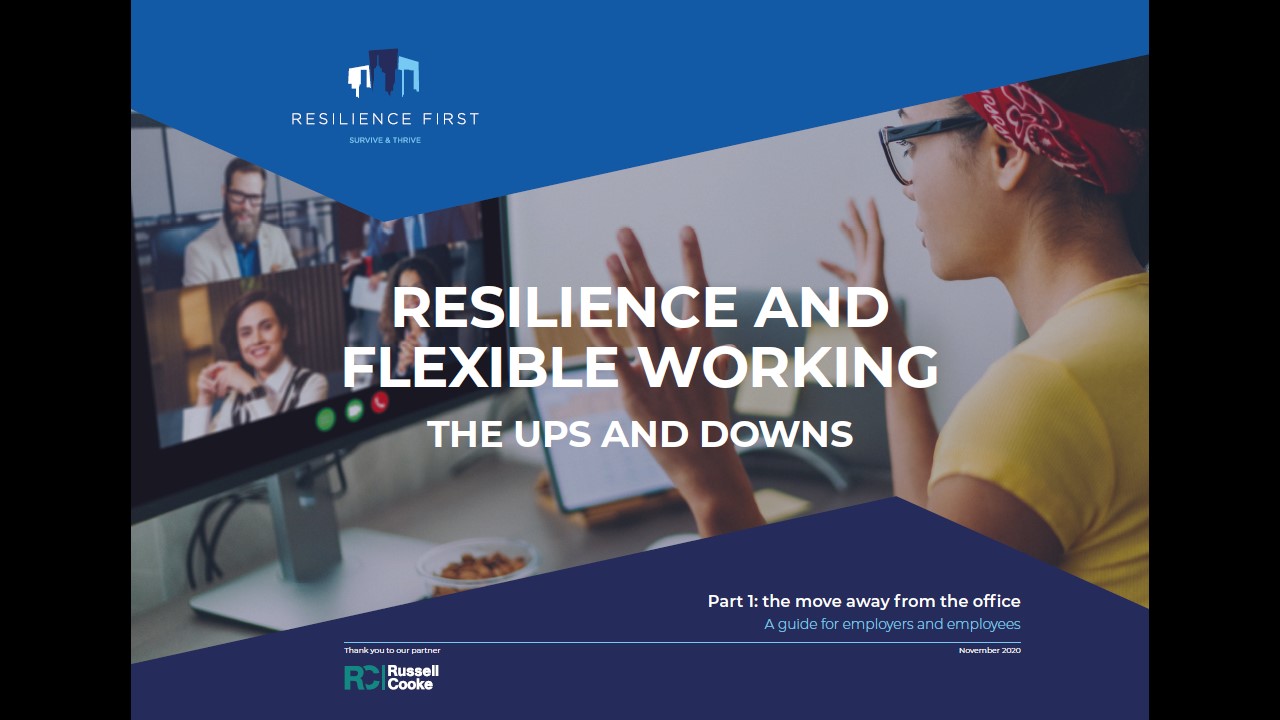Working from home (WFH) has brought many benefits to both employees and employers in addition to driving down Covid-19 infection rates, including reduced overheads, lower travel costs, more efficient use of time and a better work life balance. However, there is also a downside for employees that includes reduced creativity, increased isolation from colleagues and, for some, mental health issues.
According to a survey carried out by Resilience First, more than half of remote workers are now suffering from working from home fatigue, a condition that can reflect many of these downsides. And this is likely to be a long term situation, with Europe entering a second lockdown and three quarters of the biggest employers now saying that remote working in some shape is here to stay for the foreseeable future.
Some are beginning to question whether the traditional office is ‘obsolete’. Others have indicated that they will promote a ‘culture that values and supports remote working’ with a goal of having around a third of the workforce working from home or near home in the future. What is clear is that returning to the office is proving to be slower and more difficult than dispersal in the first instance.
Companies have adopted different strategies but according to a survey in one national paper, ‘three-quarters of the UK’s biggest employers are looking at a permanent shift to flexible working’. This infers a blended mix of office and remote working, with the latter frequently including working from home. Without official regulation, a return to the office will occur to mixed degrees.
Most businesses now accept home or remote working as a reality for the foreseeable future for a good proportion of their employees, accelerating a trend of around 5% that existed before the pandemic. Besides the continuing fear of Covid, many staff have gained a positive taste of working from home and thereby avoiding often a lengthy and costly commute.
In a separate LinkedIn poll of 45,000 people, less than a quarter indicated a preference to work only from home, with more than three-quarters preferring to work from either the office or in a home/office blend.
To address this problem, Resilience First has just published the first of a two-part guide for organisations dealing with issues around flexible working on the back of the Covid-19 lockdown, “Resilience and Flexible Working – The Ups and Downs”. The Guide is produced in collaboration with law firm Russell-Cooke.
The Guide contains practical information for employers on how to maintain trust, teams and morale, how to maintain mental wellbeing and how to keep employees safe whilst working remotely. It also includes a customised WFH Risk Assessment Template from Resilience First for employers to use with their teams.
The pandemic has brought about some significant changes to our previous, traditional working practices, and more adaptation will become apparent as we travel along the long and winding road to recovery. There is no doubt that companies are seeing change as both a necessity and an opportunity. The pandemic has accelerated that change in way we could not have imagined even at the end of last year.
There is a realisation by many organisations that a significant proportion of their workforce will – for the foreseeable future – be dispersed and working away from the office for much of the time. Technology has been the great enabler here. While such flexible working may allow companies to reduce office footprints, there are potential downsides in terms of productivity hits through a lack of bonding, training and creativity. There is also the real danger of mental ill-health and skills fade in key areas like safety.
Helping us to launch the Guide, Russell-Cooke partner and health and safety specialist Kizzy Augustin said: “As the UK heads back into lockdown, individuals and businesses are feeling a sense of déjà vu. However, the stakes are much higher this time. Not only has fatigue set in, but the days are short, and the weather is against us. We also know that last time, three weeks of lockdown turned into far longer. For this reason, the Resilience First guide is extremely timely and we have been delighted to collaborate on it.”
“As a health and safety lawyer I know that many businesses are simply not aware of their duties towards their employees and the sanctions for non-compliance. It is important that we protect our employees both from the physical health issues that are uppermost in our minds (contracting Covid-19) and also the mental health issues that may arise as a result of prolonged working from home or changes to the usual working arrangements. We hope this guide will have wide relevance and broad buy-in.”
Behavioural change takes 2-3 months to become established and neither vaccines nor stipends are likely to undo entirely the shift in distributed working which may also boost staff wellbeing. Rosters based around part-time occupancy (1-3 days per week in the office) – once official advice is relaxed – may help to overcome management concerns of a loss of creativity by association, fewer opportunities for team building, training, mentoring and corporate bonding.
Another solution that may gain traction is the adoption of collaboration hubs or satellite offices that will avoid long commutes into major cities. This trend is being seen indirectly in the relative busyness of regional towns to the detriment of major cities like London. It is reported that retailers on high streets in towns and suburbs are suffering less from a downturn in trade than witnessed in large cities because people are remaining closer to home on a regular basis. House purchases in the suburbs has also risen on the back of people seeking premises with offices and open spaces.
All this will not help the economic damage from the collapse of major city-centre services, including rail and tube. It may also not help secure city pay and allowances – why should companies pay benefits for staff wanting to work out of town?
What is for sure is that the office will never be quite the same again. We need to grasp the opportunities and manage the change in a domain which has largely remain unaltered for decades. The contest over the future of the workplace has only just begun.







